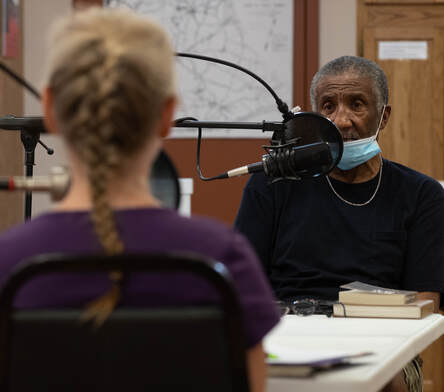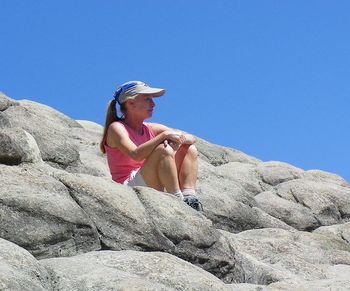 My favorite cove on Mallard Point lake. My favorite cove on Mallard Point lake. It has been a summer of unexpected connections and unexpected losses. Protesters of all colors filled the streets, and hope tempered horror. Families said their last goodbyes from afar, watching on a screen as loved ones took their final breaths. Our nation’s norms and conventions and our most reliable institutions remain under assault. It’s as if the world has tilted too far on its axis, and we’re breathlessly waiting to see if it can right itself again. Amid all the disruption and uncertainty, all the sadness and grief, I turn to nature, as always, for solace. I drop my little boat in the water and paddle to the most remote cove on our tiny lake. There I tuck myself amid the fallen logs and the loafing carp, and I watch the sun dapple the trees. I listen to the Great Blue Heron screech as it escapes my intrusion. The deer look up, and just as quickly return their attention to the new foliage near the woodland floor. The turtles wait until I float by, and then drop into the water, long after any imagined threat has passed. I position my boat so I can gaze up the sloping hillside to my left. Then I turn my attention to the cove’s vanishing point and listen for signs of other creatures. I pivot toward the right and watch the grazing deer or intentionally spook the giant carp to engage in a little bumper pool. This is where I go when I need to turn the world off. When the cacophony has battered my senses and I crave calm. When my thoughts are bumping against each other, creating friction and heat that prevent me from clearly discerning one from another. The realities of our world this summer have presented most of us with more solitude than we are typically allotted. As engagements and events and opportunities to gather with friends and family have fallen off the calendar, those of us fortunate enough to be beyond the worries of work and child-rearing and aging parents have had the opportunity to assess our lives and how we live them—what we prioritize, how we spend our time, what nourishes us and strengthens us. While many have struggled with this separation or its attendant sense of isolation, I cherish it. I welcome the slower pace. I revel in quiet time for contemplation without the buzz of constant busyness. I can focus on what’s important. You may not share my affinity for this sudden interruption of our normal activities, but I hope you, too, have found a way to embrace the unwelcome changes. That may require ceasing fretting long enough to clear the voices in our heads, or accepting that we can’t control all the forces shifting around us. Amid this tumult, we all need a place of respite, whether physical or spiritual or imaginary. I’m so lucky that mine is just a short paddle away.
6 Comments
This weekend I’m celebrating a small victory. As a self-published author, I wear many hats. I am the sole proprietor of Murky Press, a small publishing business. I manage my business taxes and licensing requirements. I keep records of sales and inventory. I manage the business website and a variety of software licenses that help me do all the work. I publish through Amazon and IngramSpark, and I maintain accounts with each of those companies as well as with companies that provide my web domain and host my website and manage my ISBN numbers. I’ve written recently about my rather lackadaisical marketing efforts, but I do try to come up with creative ways to get the word out about my books. BC (before COVID) I would spend time at book fairs and speak to small community groups. I post regularly to this blog to stay in touch with all of you. And then, of course, I have to write the damn books. That may require research assistance, travel, and coordination with editors and cover designers and possibly illustrators. I do my own page layout and book design for both printed books and ebooks, so I am spared contracting with even more individuals for that work. Of all these myriad tasks, however, the one that gives me the biggest headache is troubleshooting technical problems. Now long, long ago, I worked in the tech industry and I prided myself in keeping up with technology advancements. But I’m way past that. Things change, sometimes dramatically, every three to six months now. I’m no longer interested in keeping up, and I only fall farther and farther behind with each calendar year. So I dread wrestling with technology problems. And they befall us all, whether we’re simply trying to manage a smart phone or an online business. For a couple of months now, I’ve been trying to get to the bottom of the “Not secure” message that had appeared next to the Murky Press web address in some browsers. A couple of my loyal blog readers had expressed concern about encountering dire warnings relating to stolen passwords and credit card numbers. Let me state up front that the Murky Press website was never risky to visit. I do not request passwords or credit card numbers from anyone. But I know it was unsettling to see those messages. It was for me. And I learned this summer that it could seem downright scary for some of you. Today, as you access the Clearing the Fog blog, you may finally see a closed lock symbol indicating that the site is now secure. Whew. I hope all those frightening messages have gone away. I didn’t really do anything, in the end. But after multiple phone calls and online chats, I finally got my domain provider to talk to my website host. They changed one number in my IP address and voilà—I have now been certified as the legitimate owner of this website. The cynic in me wonders if this recent security requirement—an “SSL certificate” for those of you in the know—is simply a way to justify staffing up the customer support lines and thereby expanding business. Perhaps if I were selling products from my website I would have more patience for this stuff. Nonetheless it appears I have finally solved the riddle. I finally have a website that won’t scare the bejesus out of my loyal visitors. Thanks to all of you for trusting me during these uncertain times. So raise a glass with me to one small victory over the worldwide website warlords! They stole hours and hours of my time, but you can now read future blogs with a sense of total security.  Jim Bannister, during our “family conversation” at the Hopewell Museum in Paris, Ky., July 15, 2020. Photo by Bobby Shiflet. Jim Bannister, during our “family conversation” at the Hopewell Museum in Paris, Ky., July 15, 2020. Photo by Bobby Shiflet. When he walked into the meeting room, my knees nearly buckled. Long and lanky, Jim Bannister physically resembles his great-uncle, George Carter. From the way Bannister heard his grandmother describe her brother, it seems the two men also share some character traits. Both are genial and gracious, polite and respectful. (Quite a contrast from how Carter was portrayed in newspaper articles justifying his fate.) I don’t know whether Carter also shared Bannister’s gentle garrulity or his bracing honesty. Bannister has lived a long and full life. After retiring from one of our nation’s iconic companies, he stumbled into a second career that filled his next 15 years. He is immensely proud of his three children, five grandchildren, and two great-grandchildren. George Carter never had a chance to see what he could make of his life. At 22, he was murdered by a mob seeking misplaced justice for my great-grandmother. He never got to see his two daughters—an infant and a toddler when he died—grow into young women. Although I have no evidence that my family was directly involved in that mob, the actions of those men must have had my great-grandparents’ tacit approval. The long, detailed, nearly baroque newspaper article that described the event never mentioned that Mrs. Board was outraged by this rogue justice. If that had been the case, I have to imagine the newspaper’s owner—the husband of her good friend—would have felt obligated to acknowledge it. Or at least allude that the mob’s actions were shocking to her “gentle sensibilities.” Instead, the editor felt comfortable printing her name in bold type just below the booming headline “JUDGE LYNCH.” And it was this silent acceptance that made it all so sinister. That same unspoken code underpins the racism that roils us today. It informs our wordless interpretation of the symbols of our bloody history: the monument that looms over a city, the flag draped along a front porch, the arched gate that tells a tale that only a few people can hear. My ancestors helped gird this “infrastructure of oppression” that former President Obama referenced during his eulogy for Congressman John Lewis, a national hero who dedicated his life to shouting out loud what some would prefer to keep under a bushel. Who demanded that we unshackle ourselves from the myths and the lies we have told ourselves and exclaim that all men are indeed equal and therefore deserve an equal chance at a long and full life. I’m still trying to understand why Jim Bannister was willing to meet with me, a member of the family that introduced such horror into his own. I think, in part, he was determined to break the silence that surrounded this piece of his family’s history. A silence that he bravely mimicked at a very young age when he chose not to tell his grandmother about the beatings he endured at the hands of a black teacher. It was the oppressiveness of all that silence that burdened him. Why would no one talk about it? Why could he not learn more about an incident so significant to his beloved grandmother? Going into our initial meeting, I mistakenly thought that George Carter was Jim Bannister’s great-great-uncle. That seemed fairly removed from his own life. But my heart began racing when I realized early in our conversation that we were talking about his grandmother’s brother. The grandmother who had raised him. A woman he was around every day. George Carter would have been immediate family to him. I, on the other hand, had never known my grandfather, the one who allegedly identified George Carter at the jail when he was only eight years old. My mother had never known him. It all feels like distant history for me. But with Jim Bannister’s help, I will be able to feel a little more sharply the pain my family caused. That’s what I need to propel me to search for another small step I can take to help right some of these generational wrongs, to heed John Lewis’ words in his final op-ed: “Democracy is not a state. It is an act, and each generation must do its part to help build what we called the Beloved Community, a nation and world society at peace with itself.” I recently called Mr. Bannister, breaking another brief silence that hung between us, to let him know that I had discovered we had both worked for the same company. To let him know there was something else we had in common. We had a long and delightful conversation. He shared more about growing up in Paris just after World War II, as well as a few tidbits about his children’s and grandchildren’s accomplishments. When I got off the phone, I was grinning from ear to ear. I have a new friend. And I couldn’t be happier.
|
Details
Archives
June 2023
Categories
All
|


 RSS Feed
RSS Feed